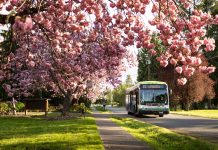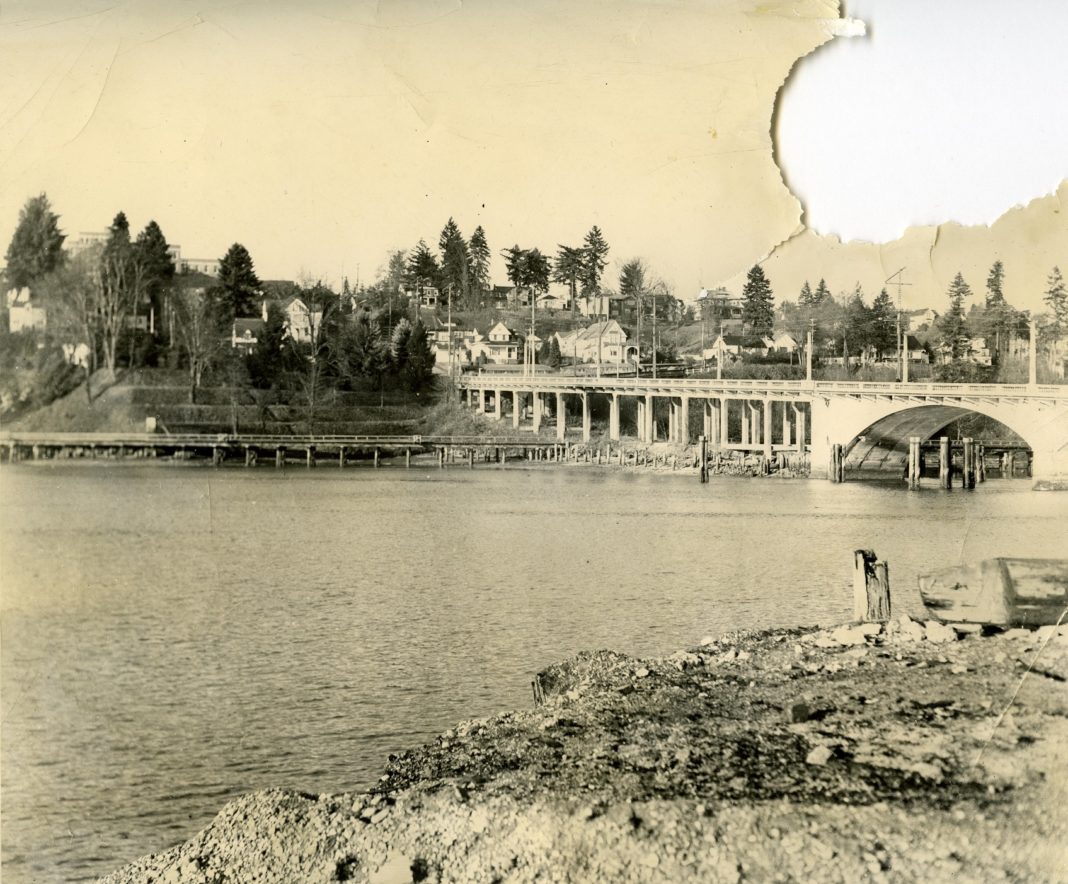Founded on a peninsula jutting out into Budd Inlet, Olympia has been historically oriented towards the water. Travel before, and for a time after, Euro-American settlement in 1850 was easiest by boat or canoe. Land connections to the mainland were another matter.
 Eventually a bridge would be built from downtown Olympia to the Eastside. However, on the other side of town, a series of bridges on what became West Fourth Avenue would provide a vital transportation link from downtown Olympia to west Olympia, connecting the growing city.
Eventually a bridge would be built from downtown Olympia to the Eastside. However, on the other side of town, a series of bridges on what became West Fourth Avenue would provide a vital transportation link from downtown Olympia to west Olympia, connecting the growing city.
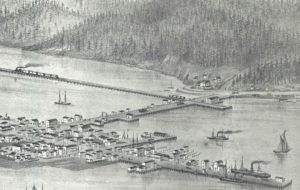
In 1856 the Washington Territorial Legislature appointed a board of commissioners to oversee construction of a bridge to the Westside. They designed a drawbridge on wooden pilings so ships could sail past into Tumwater at the head of Budd Inlet. However, lack of funds stalled construction until 1869 when the county loaned the City of Olympia $1,500. The drawbridge’s lift mechanism, however, proved ineffective.
In 1881 a larger bridge replaced the older structure. However, the new connection soon fell into disrepair. In 1889 the city had to enforce an ordinance against trotting horses across the bridge since this created holes in the planking. The bridge again was replaced in 1891 for $3,177. It was twenty-four feet wide, with an eighty-foot draw-span, including a six-foot path with a motorized draw-span.
This lift was also ineffective. In 1903 Leopold Schmidt of the Olympia Brewing Company sued the city of Olympia and the Northern Pacific Railroad Company, which ran its tracks on the span, for obstructing the waterway to his dock in Tumwater by failing to maintain a reliable draw-span lift.
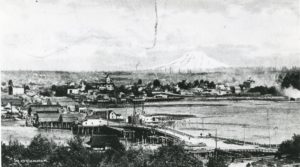
The bridge also suffered other problems. A year later a horse stepped through the planking. Repairs to this and other damage cost $4,800. In 1905 the bridge was rebuilt with a new lift-span equipped with an electric motor. But while in use, the motor often started to smoke and strained the electrical grid so much that lights dimmed across town. By 1907, the motor was barely functioning and the lift-span was listing noticeably to the west.
Disaster struck in 1915 when the bridge collapsed at 4:00 p.m. on March 15. Police officer Dan McReavy was opening the draw-span to allow a tugboat through, but the piers that supported the hinge of the drawbridge sank as it started to open. The bridge was heavily damaged as described in the following day’s issue of the Olympia Daily Recorder:
When the piers settled under the strain of lifting the draw span, which was lifted is on the city side by cables from the motor underneath the bridge, running up through the lofty superstructure, the draw settled back in the place at the farther end and engaged safely. The drop of the piece of about three feet crumpled the floor stringers and plank decking and also fractured on[e] of the main superstructure beams near the decking, bent the one on the other side, and broke some of the cross braces, the whole superstructure being badly racked. The forward tilt of the sinking piece also pulled the two rear pieces a few inches forward, so it is doubtful if any use could be made of any of these four piers which are of steel jacketed concrete around clusters of piling footings.
Plans for a temporary replacement began the next day and Horace A. Percival’s team built, in only ten days, a bridge that was nineteen feet wide and four hundred feet long, restoring streetcar traffic. In 1919 the Union Bridge Company won the bid to build a new concrete bridge for $132,750. Construction of the bridge was difficult and became even more complicated with a two week strike by pile drivers.
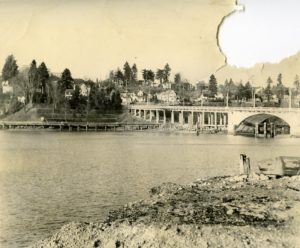
The concrete bridge officially opened May 3, 1921. The day before the official ceremony there was a car procession that crossed the new structure. It was led by Horace A. Percival in his car “Old Betsy” to honor his father, Captain Sam Percival, who had sold the city timbers for the first Fourth Avenue bridge. “I kinda wish the old dad could have seen me do the trick,” the younger Percival was quoted in the Morning Olympian on May 3. He was followed by several Westsiders heading into town.
In 1935 the west end of the bridge was re-channeled to create an island and it was made part of what became Highway 99. In 1958 Olympia voted to authorize construction of another bridge to the Westside at Fifth Avenue, financed by both city and state funds.
By 1995 however, the city determined that the bridge was deteriorating and needed to be replaced. On February 28, 2001, the 6.8 magnitude Nisqually Earthquake struck, and the damaged structure was closed to traffic. Construction of a new bridge began on November 15, 2001.
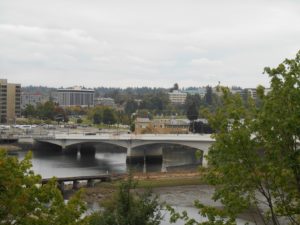
Photo courtesy: Jennifer Crooks.
Two roundabouts above the bridge were constructed as well as a relocated Park of the Seven Oars. The span was formally dedicated on May 16, 2004, and named the Olympia-Yashiro Friendship Bridge. Yashiro, now renamed Kato, is a city in Japan’s Hyogo prefecture that has been Olympia’s sister city since April 22, 1981.
Through the years, a series of bridges at Fourth Avenue have provided a vital transportation link in Olympia, connecting people and places. Now, honoring Olympia and its sister city Kato, the current structure represents not only connections across the city but across the globe.










